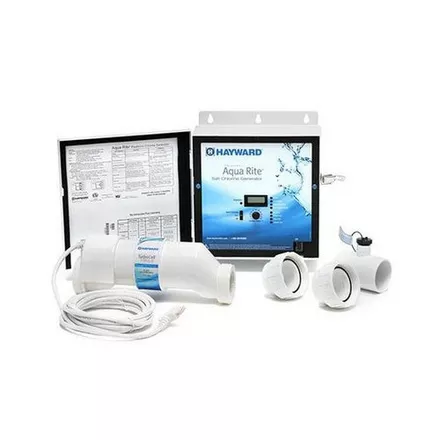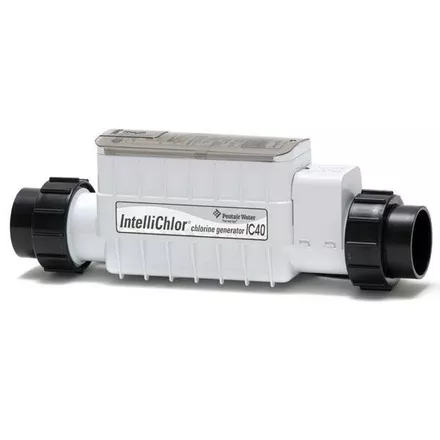
Baquacil is a system of pool chemical care that uses Biguanides for sanitation, and Peroxide for shocking. It’s known to be effective, and thousands of pool owners use a biguanide treatment on their pools. it is sold under the name Baquacil, with competitors such as SoftSwim, Revacil or Splashes.
Why Switch from Baquacil to a Salt Chlorinator?
- Baquacil can become more expensive over time due to increased sanitizer needs.
- After a few years, waste can build up and cause cloudy water or worse, a pink slime.
- Filter media needs to be cleaned every year.
- If you’ve been having repeated water issues.
How do I Switch from Baquacil to a Salt System?
Shock the Pool! Balance your pool’s water, and then use either liquid chlorine or non-chlorine shock. This will break apart the molecular bonds of the biguanides. Once you add the shock, check your pool water daily and add more chlorine to the pool if your test kit shows the level above zero. Keep adding chlorine until you are no longer getting a reading of baquacil in your water. During this time you will notice that your pool water may change different colors and you will have a residual of waste at the bottom of your pool. This is normal. Vacuum up the waste directly to waste, if you have a cartridge filter you will need to clean your cartridges after each cleaning.
This process may take a day or could take a week. The duration is determined by how much baquacil is in your pool and how much chlorine you are adding. Start with 2 gallons of bleach (or 4 gals of Clorox) per 10,000 gallons, or if using non-chlorine shock, use 8 lbs per 10,000 gals. Run the filter 24/7 until the water clears, backwashing if needed.
Repeat the treatment if your pool water does not clear within a week. Usual time required is 3-5 days, but it can take longer or require additional chlorine if biguanide levels are high or if the pool water was in poor condition before treatment.
Change your Filter Media! Replace your pool filter grids, cartridges or sand. When the chlorinated water comes in contact with this residual it will cause a reaction leaving you with cloudy water and poor filtration. It’s best to do this just after your water clears from the baquacil removal treatment. If your filter media is fairly new, you may be able to use a Filter Clean chemical instead of replacing.
Add Salt, Plug in Your Salt Chlorinator! Once the water clears, and you have eliminated the biguanide residual from your pool, you can add salt and turn on your salt water chlorine generator. Installation involves plumbing the salt cell, and mounting the control box. The salt cell is a device that you plumb into your return line, and the control box mounts on a wall, near an outlet. Connect a sensor from the salt cell to the control box, and you’re done! You’ll need about 200lbs of pool salt per 10,000 gallons to start, with annual booster treatments of 10-50 lbs of pool salt per 10,000 gallons of pool water.
Cost to switch from Baquacil to a Salt Chlorine Generator?
Good question. It won’t be cheap, at least initially. After the initial spend, however, your salt pool chlorinator will crank out as much chlorine as you need. I have added up the costs that an average size inground pool may have. Your costs may be more or less than the nice round figure below.
Best Time to Switch from Baquacil to a Salt Chlorine Generator?
If you close your pool down for the winter months, making the switch is best done when you open your pool in the spring as this should be the time when the residual of baquacil is the lowest. Outside of this advice, the best time to switch may be when you can’t get the pool water clear, no matter what you try, and all the pool store has to offer is another $100 solution.
If you have been using Baquacil because of an aversion to chlorine – do not worry. Salt chlorinator pools have all of the good traits of chlorine, without the smelly water, itchy skin, red eyes and damaged hair. The water is soft and silky, without a hint of chlorine or saltiness.




